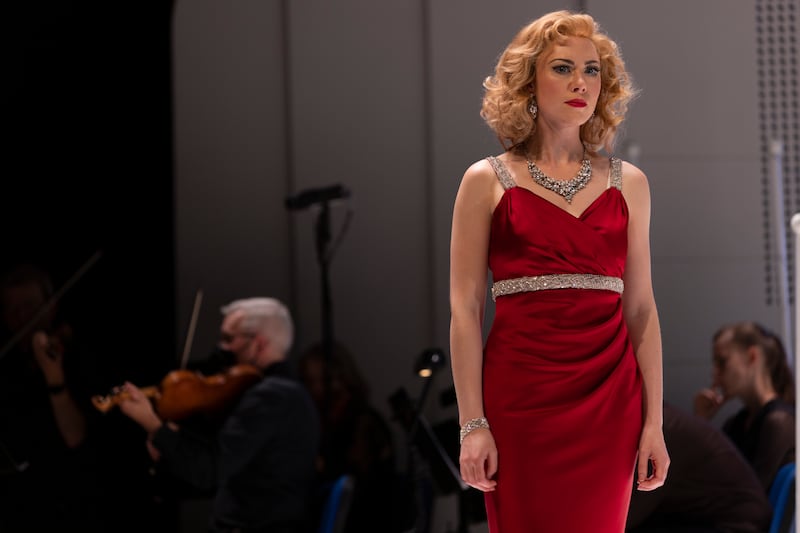Semele
Kilkenny Arts Festival
3/5
Opera Collective Ireland has had a long wait to bring its production of Handel’s Semele to the stage at Kilkenny Arts Festival. For two years in a row Covid-19 got in the way of their second collaboration with director Patrick Mason and the Akademie für Alte Musik Berlin. It finally made it to the stage at the Watergate Theatre on Thursday.
Semele was premiered at Covent Garden during Lent in February 1744 and, although it was based on an opera libretto, it was presented then as an oratorio. Its hot subject matter – sex and power play between gods and mortals – limited its appeal as an oratorio. Its oratorio presentation limited its appeal to opera lovers. It was only performed six times in the composer’s lifetime, and its arrival on the opera stage had to wait until 1925, when 20th century interest in Handel’s operas was rising rapidly.
The plot concerns the affair between the mortal Semele, daughter of the King of Thebes, and Jupiter, the god of thunder. Semele backs out of her wedding to Prince Athamas (Jupiter can conveniently provide a noisily ominous omen), but feels outclassed in the company of the immortals. She is tricked by Jupiter’s wife Juno into demanding to see the god in his real form, fire. When Jupiter reveals himself she is literally consumed by him.
The work is musically rich, with lots of oratorio-like, meaty choruses for the gutsy singers of the always on-stage Belfast vocal ensemble, Sestina. In set and lighting designer Paul Keogan’s lushly-lit, 20th century art deco Hollywood setting, they are garbed by costume designer Catherine Fay in textures of grey and charcoal.
Minecraft movie hurls Irish cinemas into world of chaos and flying popcorn
Conor McManus: Malachy O’Rourke effect already has Tyrone doing simple things well
I Am Not an Alcoholic: A lot of things changed for me when I stopped drinking
Approved retirement funds: What is an ARF and how much will it cost me?
Soprano Kelli-Ann Masterson rides the rocketing vocal fireworks of her role and impresses, too, in the more intimate moments. But, like tenor Andrew Gavin as Jupiter, she is not equally persuasive in what you might call the communicative middle ground. Gavin demonstrates an impressively wide range of colour and timbre, but the extremity of change note by note does get in the way of well-focused phrasing.

Dutch counter tenor Gerben van der Werf plays Athamas wimpishly enough to offer an independent explanation of Semele’s rejection of him. Mezzo-soprano Dominica Williams doubles up as Juno and Semele’s sister, Ino, in a dark style that is always engaging. Soprano Jade Phoenix is more flighty as Juno’s attendant, Iris.
The evening is not memorable for the clarity of diction or strength of musical feeling for Handel’s style. Conductor Andrew Griffiths (standing in for Christian Curnyn “due to unforeseen circumstances”) doesn’t always get the kind of bite and incisiveness that you would expect from his German players.
It is, of all things, the representation of Somnus, god of sleep, by bass Edward Hawkins, that brings the evening to a higher level. His singing is lucidly sonorous, gravely Handelian but with a sharp comic twist, and every word is clear. Aside from the vocal gymnastics, it is this production’s great showstopping moment.
Semele runs until Sunday, August 14th, at the Watergate Theatre; it then runs at the Pavilion Theatre, Dún Laoghaire, on Saturday, September 2nd, and Sunday, September 3rd; www.operacollectiveireland.com













